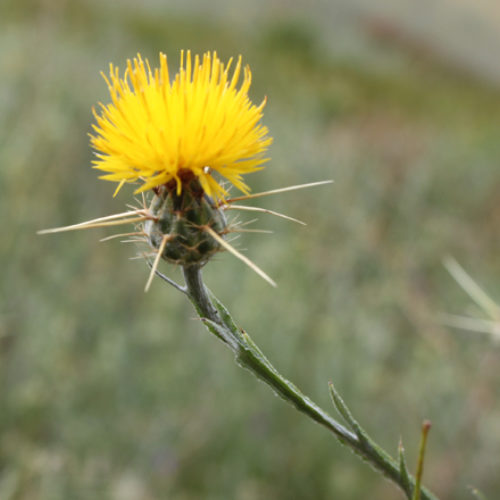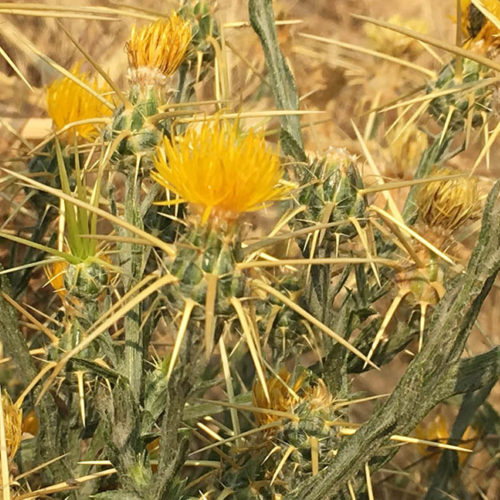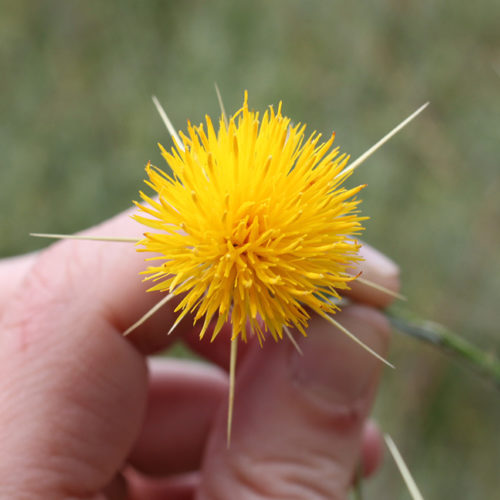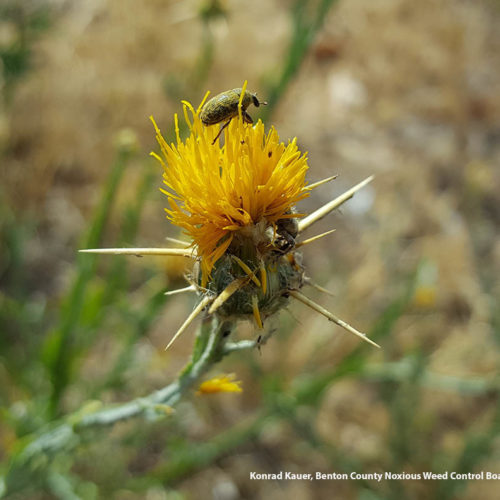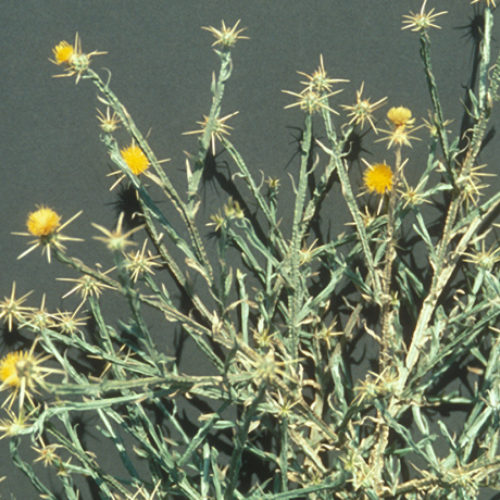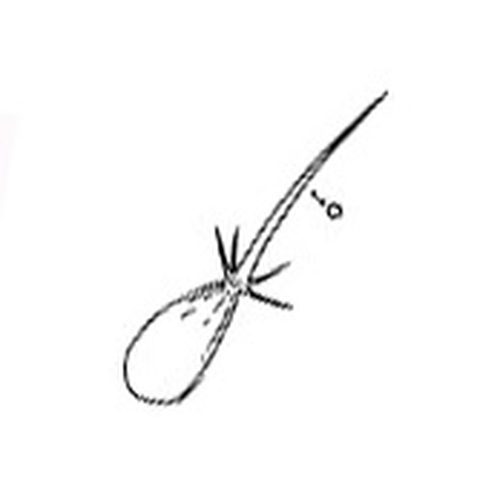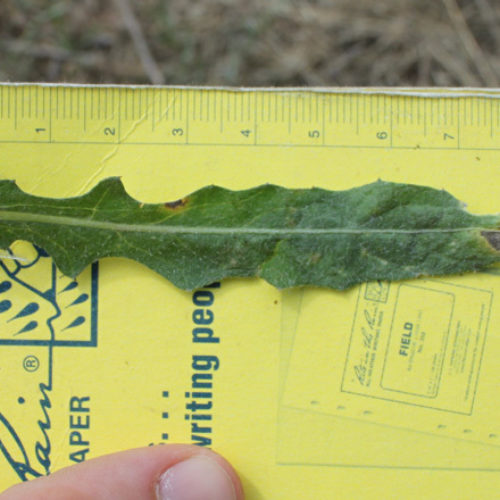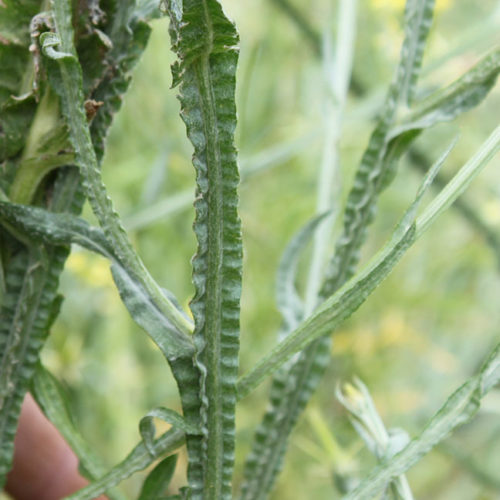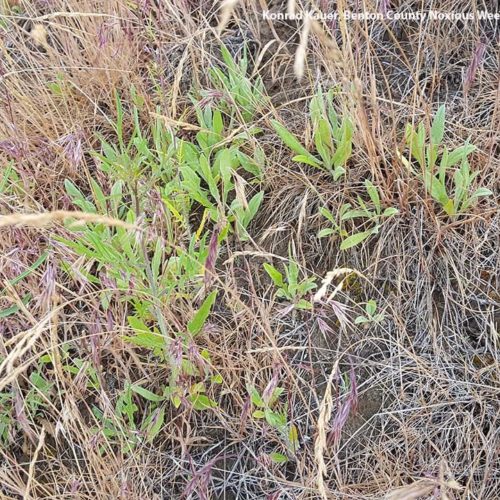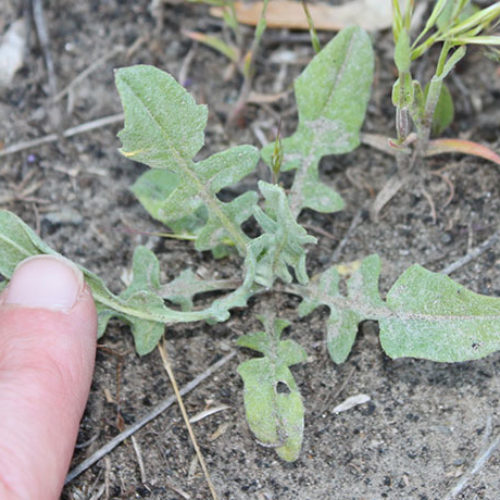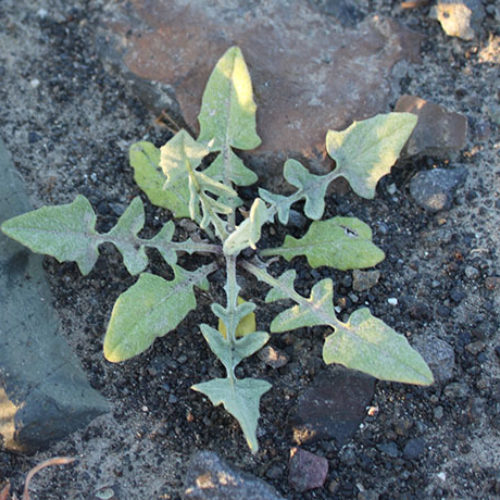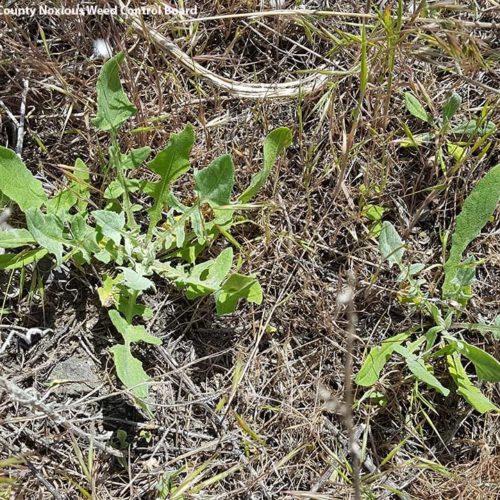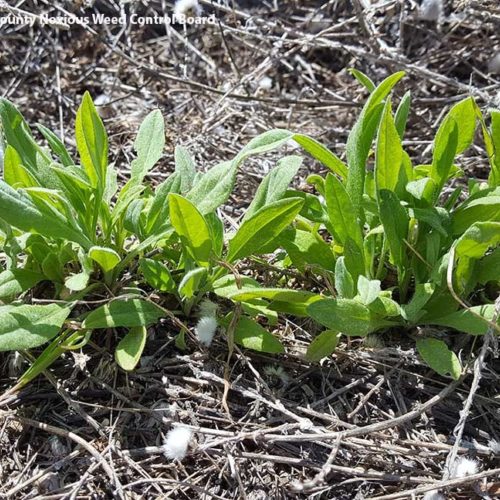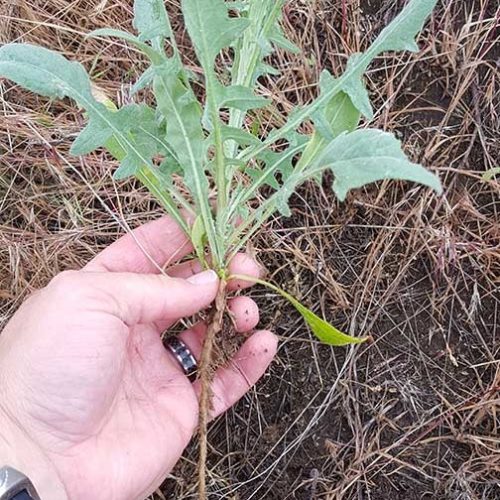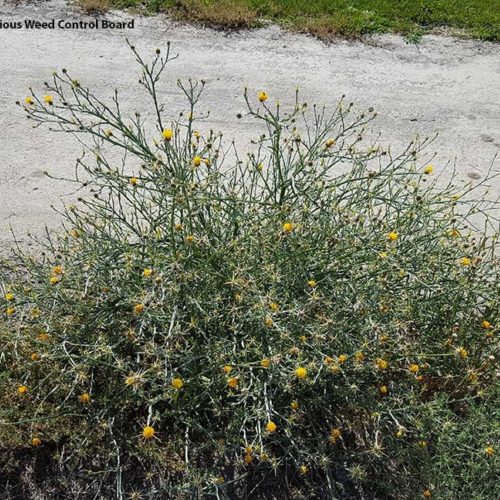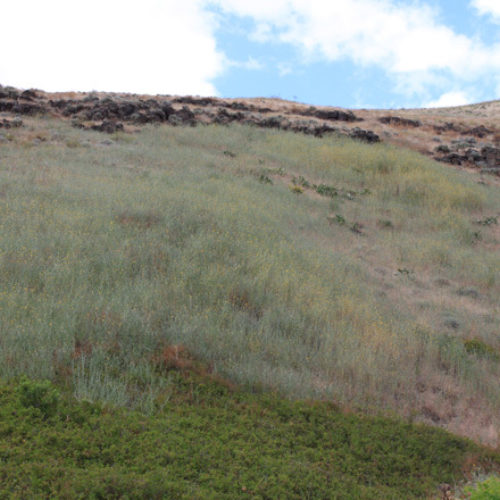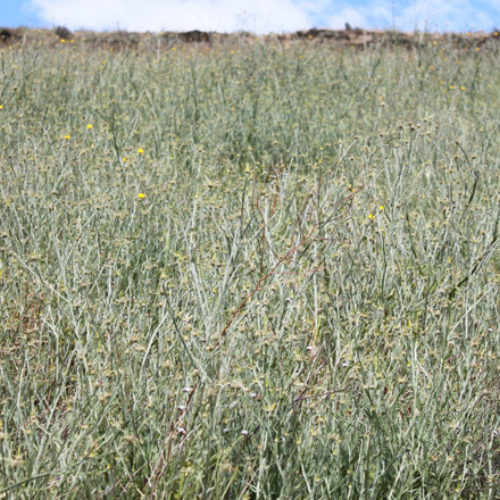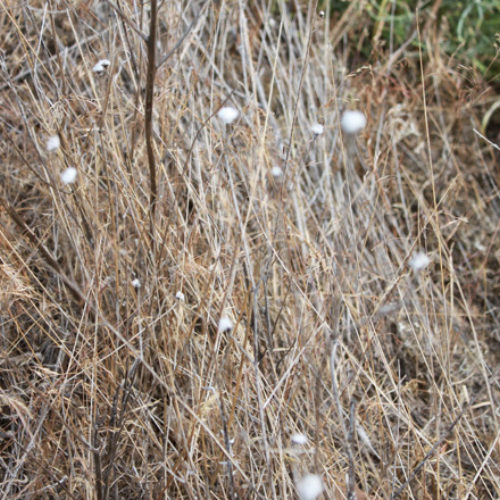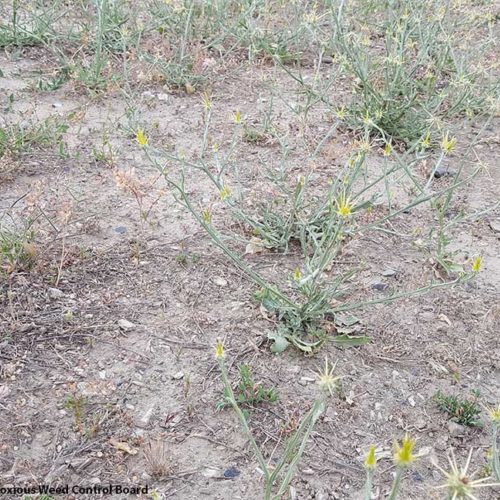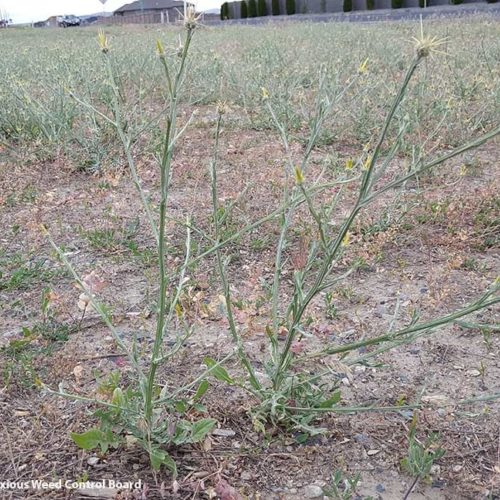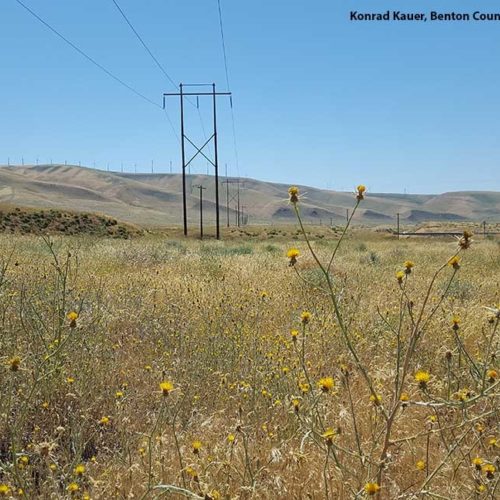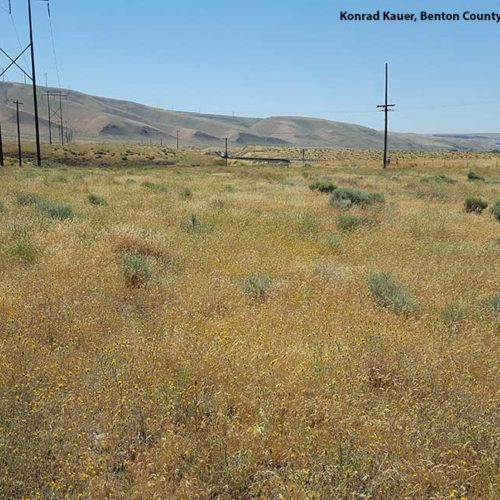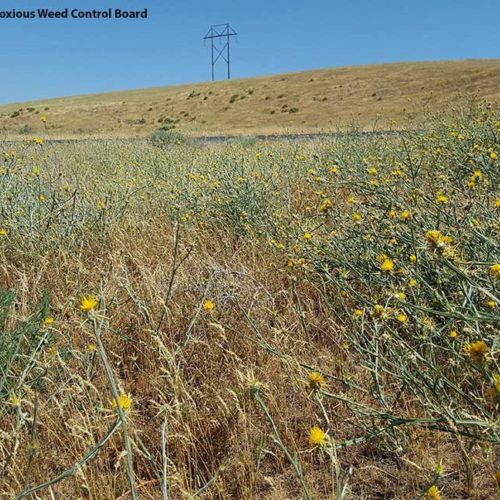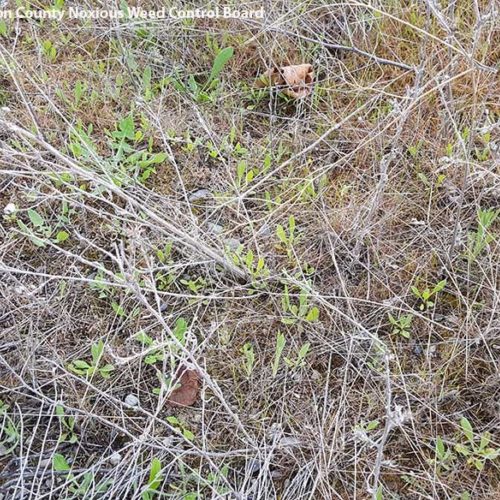Yellow Starthistle
Centaurea solstitialis
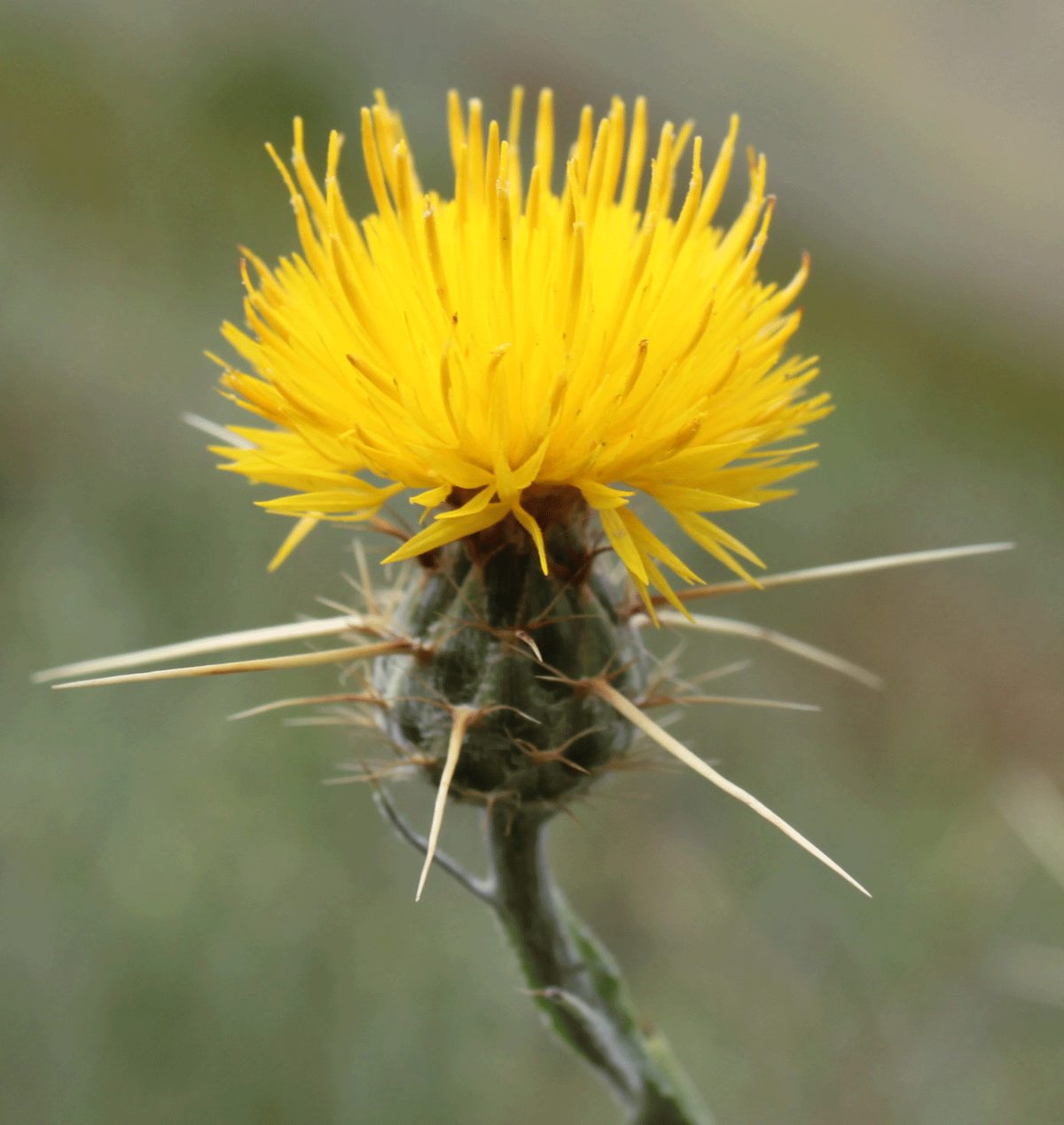
Family: Asteraceae
Other Common Names: yellow cockspur, St. Barnaby's thistle
Weed class: B
Year Listed: 1988
Native to: Europe, Asia and Northern Africa
Is this Weed Toxic?:
livestock
Why Is It a Noxious Weed?
It is an aggressive species that has invaded millions of acres of rangelands in the western United States. Cattle feeding on it may be poorly nourished and can be damaged by the spiny heads. Horses may be poisoned and develop chewing disease.
How would I identify it?
General Description
Yellow starthistle is an annual or biennial growing 20 to 80 cm tall (18 to 36 inches). Plants have deep taproots, winged stems and are covered in thin white, woolly hairs.
Flower Description
Flowerheads with a wide base and composed of yellow flowers. Bracts at the base of flowerheads with spine tips of varying lengths. Larger spines on bract tips are 3/8 to 3/4 inch long (1.1 to 2.2 cm), yellowish in color and are star-like in arrangement.
Leaf description
Basal leaves lobed, sometimes with the terminal lobe larger and more rounded than the other lobes. Stem leaves smaller, becoming narrower and not lobed.
Stem description
Stems are dull green and covered with woolly hairs.
Fruit Seed Description
There are two types of seeds, both are 2 to 3 mm long and hairless. Outer seeds are dark brown and are without bristles (pappus). Inner seeds of seed head are glossy, white or light brown and mottled with short, white bristles (pappus) on one end.
Where does it grow?
Yellow starthistle is found in rangeland, edges of cropland, abandoned farmlands and pastures as well as along roadsides, railways and recreational areas. Please click here to see a county level distribution map of yellow starthistle in Washington.
How Does it Reproduce?
Yellow starthistle reproduces by seed.
How Do I Control It?
General Control Strategy
Good pasture management can help prevent or limit initial infestations. Plants need to be managed to prevent further seed production, to deplete the seedbank and to promote desirable plants species in place of the yellow starthistle. Combinations of control techniques may be most successful when trying to eradicate yellow starthistle.
Mechanical Control
Mechanical removal is not economically feasible for large, dense infestations. Small infestations may be hand-pulled, tilled or mowed. Areas should be monitored and controlled frequently during the growing season.
Cultural Control
Properly timed grazing may control yellow starthistle populations but will not eliminate them.
Biological Control
There are a number of biological agents used on yellow starthistle. The yellow starthistle hairy weevil, Eustenopus villosus, larvae and adults interfer with the seed production of yellow starthistle. The adults feed on young seedheads and the larvae feed inside flowerheads. The yellow starthistle flower weevil, Larinus curtus, larvae feed on developing yellow starthistle seedheads. The yellow starthistle bud weevil, Bangasternus orientalis, larvae feed within seedheads and reduce seed production. The yellow starthistle peacock fly, Chaetorellia australis, larvae feed within seedheads. The yellow starthistle rust, Puccinia jaceae var. solstitialis, is a fungus that attacks yellow starthistle. The yellow starthistle gall fly, Urophora sirunaseva, larvae are associated with galls formed within seedheads. For more information about these biological control agents of yellow starthisle, please visit WSU Extension Integrated Weed Control Project.
Herbicide Control
Please refer to the PNW Weed Management Handbook, or contact your county noxious weed coordinator.
For More Information
See our postcardfor early detection information about yellow starthistle.
Selected Knapweeds of Washington Brochure
See our Written Findings for more information about yellow starthistle (Centaurea solstitialis).
Franklin County NWCB Fact Sheet on yellow starthistle
Stevens County NWCB Fact Sheet on yellow starthistle
Asotin County NWCB Fact Sheet on yellow starthistle



